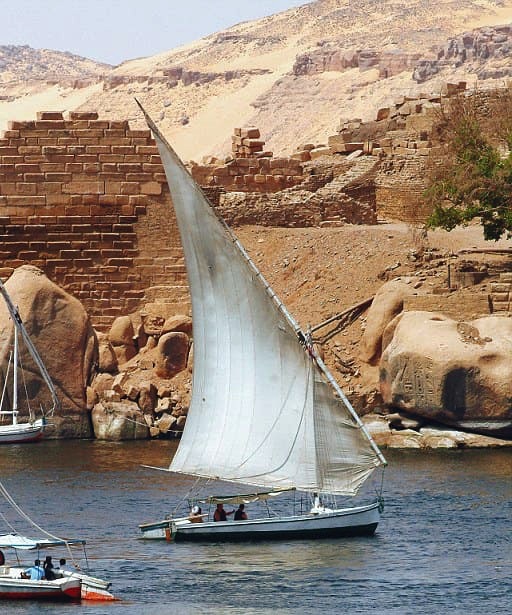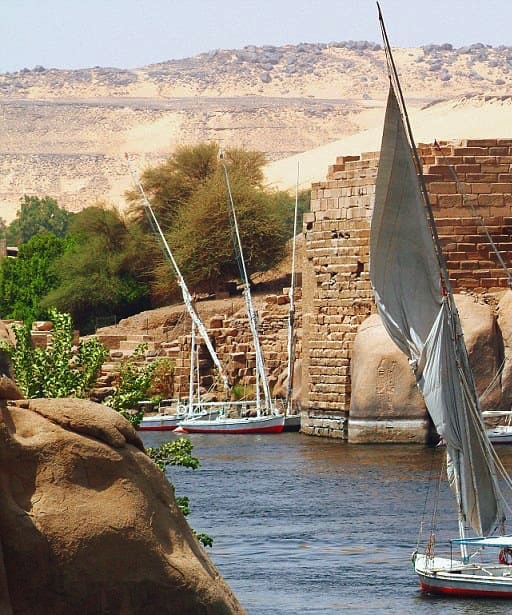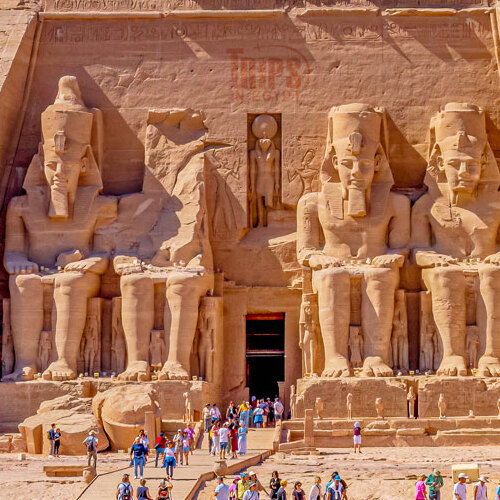Elephantine Island
Elephantine Island
Elephantine Island, situated in the middle of the Nile River in Aswan, Egypt, is a site of historical significance and a fascinating tourist destination. Here are the key aspects of this island:
Historical Significance
- Ancient Border Town: Historically, it served as a dividing point between Nubia and Egypt.
- Ancient Name: Known as “Abu” in ancient times, meaning “Elephant,” possibly named for the grey boulders resembling elephants.
- Inhabitance Since Early Dynastic Period: The island has been inhabited since ancient Egyptian times, playing a crucial role in trade and defense.

Archaeological Importance
- Continuous Excavations: German archaeologists have been excavating and reconstructing various sites on the island for over a century.
- Major Attractions: The most significant preserved structure is the Khnum Temple, dedicated to the ram-headed god Khnum, spanning from the New Kingdom to the Roman era.
- Architectural Highlights: Features include a large granite gateway built by Alexander the Great and remains of columns erected by Rameses II.
Key Sites on Elephantine Island
- Khnum Temple: The granite gateway is a prominent feature, with other parts mostly in ruins. Excavations have revealed the temple’s layout, including the forecourt, pylons, festival hall, and columned court.
- Satis Temple: Located north of the museum, it dates back to the era of Tuthmose III and Hatshepsut. Partially restored, it contains Middle Kingdom remnants and an Early Dynastic shrine.
- Nilometer: An ancient structure used to measure the Nile’s floodwaters, consisting of about 90 steps leading down to the river.
- Boulder Inscriptions: Along the banks, inscriptions from various governors and kings are visible, marking the historical significance of the island.

Visitor Experience
- Museum: The island hosts a museum displaying the archaeological finds and offering insights into its rich history.
- Accessibility: Easily accessible by boat, it offers a unique blend of ancient ruins and natural beauty.
Updated information as of April 30, 2020: Elephantine Island continues to be an important site for understanding Egypt’s ancient civilization, attracting scholars and tourists alike. Its combination of natural scenery and archaeological treasures makes it a must-visit location in Aswan.
Created On April 22, 2020
Updated On January 26, 2024
ASWAN Travel Guide



